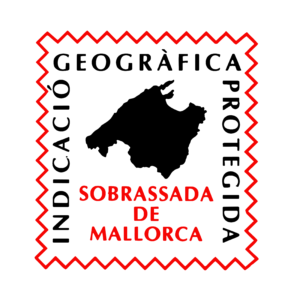The introduction of the almond tree in Mallorca dates back to the time of the Muslim domination, more than a thousand years ago, when the Arabs, expert farmers, recognized the potential of the island for the cultivation of this tree and adapted it to local conditions.
During the Middle Ages, the almond tree spread throughout Mallorca, becoming a key element of agriculture and the landscape, integrating itself into traditional farming systems.

The almond trees of Petra, in Pla de Mallorca
Petra, in the heart of the Pla de Mallorca, is a municipality intimately linked to the cultivation of the almond tree. Its fields, dyed white and pink during flowering, are a testimony to the deep-rooted agricultural tradition of the area and the importance of this tree in the local identity.
The almond tree, introduced to the island centuries ago, found in the fertile lands of the Pla a favorable environment for its development. Its cultivation, adapted to dry conditions, has shaped the landscape and the economy of Petra for generations. The farmers, with their wisdom and effort, have been able to preserve this legacy, overcoming challenges and adapting to changes.
The Petra almond, the fruit of this work, is recognized for its unique quality and flavor. Its cultivation, respectful of the environment, guarantees a natural and healthy product, appreciated both in the local gastronomy and in wider markets.
The role of the Franciscans in the introduction of the almond to California
The history of the almond in California is closely linked to the work of the Franciscan missionaries who, in their eagerness to establish self-sufficient communities in the New World, brought with them seeds and plants from their native land. Among them was the Majorcan almond, a nut prized for its flavor and nutritional value.
These missionaries, coming from various regions of Spain, including Mallorca, were well aware of the goodness of the almond tree and its ability to adapt to Mediterranean climates. When they arrived in California, they recognized in its soil and climate a favorable environment for the cultivation of this tree, and planted the first Majorcan seeds in the mission lands.
The Majorcan almond, with its characteristic flavor and hardiness, thrived in the new territory, becoming a valuable resource for the missionary communities. Its cultivation gradually spread, adapting to the particularities of the Californian environment and giving rise to new varieties that combined the best of both worlds.
Thus, the Majorcan almond, brought by the Franciscans, laid the foundations for California’s thriving almond industry. Its legacy endures to this day, not only in the almond groves that spread throughout the state, but also in the gastronomic culture and in the Californian identity.
Are you a gastronomy professional or a lover of high quality products looking to connect with the best salt producers in Mallorca?
Discover and contact here the artisans behind the world famous Flor de Sal de Mallorca and take your culinary experience to the next level with the purity and unique flavor of this exceptional salt.
Newsletter
Let us inspire you with the most authentic Mediterranean! Sign up for our newsletter and immerse yourself every month in the rich traditions and exquisite products of Mallorca!
The landscape of Mallorca during the almond blossoming period
La floración de los almendros transforma Mallorca en un espectáculo natural único, conocido como el “invierno blanco” de la isla. Entre finales de enero y principios de marzo, los campos se tiñen de tonos blancos y rosados, cubriendo amplias zonas como el Pla de Mallorca, la Sierra de Tramuntana y la zona de Llevant. Este fenómeno crea un contraste impresionante con el azul del Mediterráneo y el verde de los paisajes rurales, ofreciendo un escenario ideal para senderistas, ciclistas y amantes de la fotografía que buscan capturar la esencia de esta estación.
Este periodo no solo embellece la isla, sino que también resalta su conexión cultural con la almendra, un cultivo emblemático en Mallorca. La floración se convierte en protagonista de ferias locales y rutas turísticas que celebran los productos derivados del almendro, como miel, turrones y licor. Además, el aroma floral y la delicadeza de los pétalos han inspirado tanto leyendas, como la del rey árabe y su esposa nórdica, como tradiciones que perduran entre los mallorquines.
Fray Junípero Serra, the Majorcan Franciscan who shaped the state of California
A renowned son of the town of Petra, Fray Junipero Serra was a key figure in the Spanish missionary expansion in the region during the 18th century.
Fray Junípero Serra, born in the small Majorcan town of Petra in 1713, is an indisputable figure in the history of California. His legacy, forged through his tireless missionary work, transcends evangelization and extends to the very configuration of the state of California.
Driven by religious fervor and an adventurous spirit, Fray Junípero left his native Mallorca to embark on a journey that would take him to distant lands. After years of preaching in Mexico, in 1769, he led the expedition that would found the first mission in Alta California, San Diego de Alcalá. From that moment on, his life became intertwined with the history of this land, establishing a string of missions that would become the foundations of cities such as San Francisco, Los Angeles and San Diego.
Beyond his evangelizing work, Fray Junípero Serra was a visionary who promoted the economic and social development of the indigenous communities, introducing new agricultural and cattle-raising techniques, and fostering education and culture. His influence extended to architecture, urban planning and territorial organization, leaving an indelible mark on the Californian landscape.
The Majorcan Franciscan, with his tenacity and vision, helped shape the destiny of a distant land, leaving a legacy that endures to this day. His story is a reminder of the capacity of human beings to transform the world, for better or for worse, and of the importance of understanding the past in order to build a more just and equitable future.
It is plausible that Fray Junipero Serra’s familiarity with almond tree cultivation in his native Mallorca influenced his decision to include this tree among the species introduced to California. The missionaries were looking to establish crops that could sustain communities in the new territory, and the almond tree, adapted to Mediterranean climates such as California’s, represented a viable option. Knowledge and experience with this crop in Mallorca may have contributed to its inclusion in the Franciscan missionaries’ agricultural plans.
The Majorcan almond: excellence vs. mass production
The Majorcan almond: tradition and authentic flavor
The Majorcan almond is a local product that has been cultivated for centuries in the Balearic Islands, being an essential part of its gastronomy and culture. It stands out for its intense and complex flavor, with a slight sweet and bitter touch that makes it unique. Varieties such as “Marcona” and “Pons” are especially valued for their quality, firm texture and unmatched organoleptic profile. Mallorcan production is mostly artisanal and sustainable, as it is carried out on small farms that respect the environment and take advantage of the island’s natural resources. This approach not only ensures a superior quality product, but also supports biodiversity and reduces the carbon footprint. Mallorcan almonds shine in traditional recipes such as gató de almendra, ensaimada stuffed with almonds and in artisanal pastries that enhance the authentic taste of the Mediterranean.
California almonds: quantity over quality
California dominates the world almond market, accounting for more than 80% of global production. The “Nonpareil” is its star variety, characterized by its uniform size, neutral flavor and softer texture. These characteristics make it ideal for industrial use in products such as almond milk, snacks and flours, but limit its flavor intensity compared to the Majorcan almond. Californian production, although efficient, is highly intensive. It uses large amounts of water and agrochemicals, which generates a significant environmental impact, especially in a region affected by recurrent droughts. In addition, the distance to Europe increases the product’s carbon footprint.
Comparison between Majorcan and Californian almonds
| Characteristics | Majorcan almond | Californian almond |
|---|---|---|
| Flavor | Intense, with sweet and bitter nuances. | Neutral, less complex |
| Texture | Firm | Softer |
Production | Artisanal, sustainable | Massive, resource intensive |
| Main varieties | Marcona, Pons | Nonpareil |
| Environmental impact | Low, local production | High, water and transport intensive |
| Price | Higher, superior quality | More economical, global production |
| Main uses | Gourmet gastronomy, confectionery | Industrial, processed products |
The surprising uses of almond blossom
The almond blossom, in addition to its visual beauty, offers a variety of applications that stand out in gastronomy, cosmetics and traditional products from Mallorca. Here we explore some of the most outstanding uses:
1. Almond blossom oil
Almond oil, although best known for being extracted from the fruit, can also be obtained from the almond blossom through a distillation process. This oil is highly valued for its moisturizing and emollient properties, being a common ingredient in personal care products, such as:
- Moisturizing creams and lotions.
- Shampoos and hair masks.
- Massage oils and make-up removers.
It is also ideal for sensitive skin, including baby hygiene, and as a mask to improve hair flexibility.
2. Almond blossom water
Almond blossom water is obtained by distilling the fresh blossoms and has multiple uses, especially in Mediterranean cuisine:
- Flavoring for desserts such as cakes, biscuits or ice cream.
- Ingredient in drinks and cocktails, providing a unique floral touch.
- Relaxing infusions, used for its calming properties.
3. Almond blossom honey
Almond blossom honey is an exclusive and highly appreciated product in Mallorca. It is made from the nectar of the flowers collected by the bees, offering a mild flavor and a light color. Its properties include:
- Unique flavor, ideal to accompany toast, yogurt or infusions.
- Medicinal properties, such as soothing sore throats and strengthening the immune system.
- Natural product, without preservatives or additives, available in local markets on the island.
4. Almond blossom liqueur
The almond blossom liqueur is a traditional Mallorcan drink made by macerating the blossoms in alcohol and sugar. This sweet and aromatic liqueur is enjoyed as a digestive and is a typical gift of the island.
5. Flor d’Ametller Perfume
Flor d’Ametller perfume is one of Mallorca’s most recognized products, inspired by the fresh and delicate aroma of almond blossoms.
It stands out for its ability to capture the essence of the Mallorcan landscapes in spring, evoking the early flowering that tinges the island’s fields with white and pink. It is a fresh, light and floral fragrance, perfect for daily use or as a gift that symbolizes the essence of Mallorca.
Other articles that might interest you

EVOO mit einem Hauch von Mallorca
Mallorcas Natives Olivenöl Extra ist ein kulinarisches Juwel der Insel, in dem sich Tradition und Geschmack in jedem Tropfen vereinen

Meersalz aus Mallorca, eines der 8 besten Salze der Welt
Flor de Sal de Mallorca ist ein reines und handwerklich hergestelltes Salz, das für seine leichte und flockige Textur und
Last published articles
Havssalt från Mallorca, ett av de 8 bästa salterna i världen
Flor de Sal de Mallorca är ett rent och hantverksmässigt salt som är känt för sin lätta och flingiga konsistens
Sal marina de Mallorca, una de las 8 mejores sales del mundo
La Flor de Sal de Mallorca es una sal pura y artesanal conocida por su textura ligera y escamosa y









